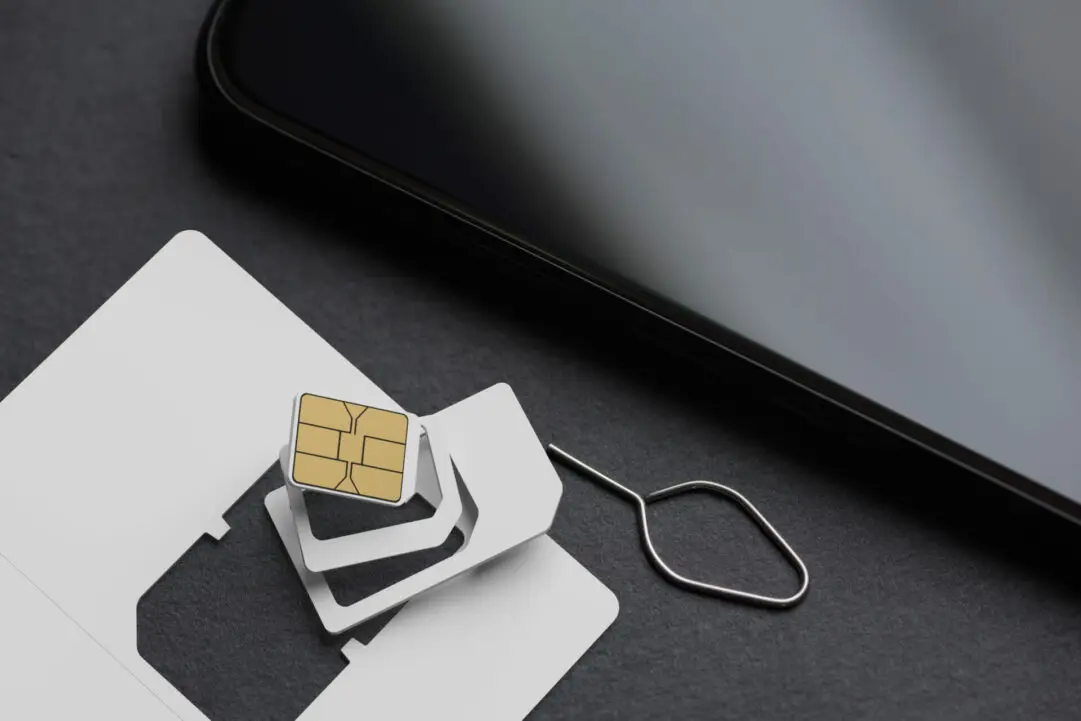Mobile connectivity plays an important business role more than ever. According to a recent survey of working adults worldwide, 64 percent of working adults in the US use personal devices for business. Traditional mobile devices rely on physical SIM cards to connect to mobile networks. However, advanced technology has produced a new player– the eSIM. This advanced technology gained momentum in recent years, offering a range of benefits compared to traditional SIM cards.
We will explore and explain the key differences between a traditional SIM card and an eSIM. We will also examine how eSIM technology transforms how we connect our devices to cellular networks. Further, we will explore tools to make personal devices more useful for business. So, let’s dive in and discover the advantages and capabilities of eSIMs.
Definition of a Traditional SIM Card
A traditional SIM card, also known as a physical SIM card, is a small, plastic card inserted into the SIM card slot of a mobile device. It acts as a link between the device and the mobile network provider, giving the necessary information to connect to and communicate with the cellular network.
Traditional SIM cards have been instrumental in enabling mobile phone connectivity for decades. These small plastic cards store crucial information about the user’s mobile phone number, carrier, and data plan.
The functionality of traditional SIM cards lies in their ability to securely store this information and authenticate the user’s device on the network. Inserting a SIM card into a mobile device with a compatible card slot establishes a connection with the carrier’s network. This allows users to make calls, send texts, and access data services.
The physical SIM card contains a unique identifying number, called an International Mobile Subscriber Identity (IMSI), which allows the network provider to authenticate the device and grant access to its network. The SIM card also stores information such as the user’s phone number, contacts, and text messages. When a user switches to a new device or changes their mobile network provider, they need to physically remove the SIM card from the old device and insert it into the new one. This process can be cumbersome and time-consuming, especially for devices with small SIM card slots.
Overview of eSIM and Traditional SIM Card
The key difference between eSIM and traditional SIM cards lies in their form and functionality. Traditional SIM cards are physical cards inserted into a mobile device’s card slot. However, eSIMs are programmable and embedded directly into the device itself.
Embedded SIMs, (or eSIMs), are built into newer smartphones, tablets, smartwatches, and other connected devices. They remove the need for physical SIM cards and offer more flexibility. With eSIM technology, users can switch between different mobile networks and cellular plans without needing to physically change the SIM card.
Advantages of eSIMs over Traditional SIM Cards
eSIM technology provides several advantages over traditional SIM cards. Because eSIMs remove the need for physical card slots in mobile devices, they allow for smaller and more compact form factors. This is especially helpful for devices such as smartwatches, with limited space.
Additionally, eSIMs offer the convenience of easily switching between multiple network providers or mobile plans without the hassle of physically swapping out SIM cards. Users can simply download and activate a new eSIM profile, providing them with more flexibility and control over their mobile connectivity.
Space-Saving
Traditional SIM cards have evolved over the years, starting with the 1st Form Factor (1FF), also known as the Full-size SIM. It was about the size of a credit card. As mobile devices became smaller, SIM cards also shrank in size. The 2nd Form Factor (2FF), or Mini-SIM, reduced the size of the card while retaining the same functionality. The 3rd Form Factor (3FF), or Micro-SIM, further downsized the card, and the 4th Form Factor (4FF), or Nano-SIM, made it even smaller.
In contrast, eSIMs, or embedded SIMs, eliminate the need for a physical card altogether.
Less Damage Prone
Furthermore, eSIMs are not prone to physical damage, such as bending or breaking, like traditional SIM cards. They also offer better waterproofing compared to traditional SIM cards, giving better device durability. Overall, eSIM technology offers a more streamlined and convenient mobile experience, making it a key development in the growth of mobile connectivity.
Better Battery Life
One of the key advantages of eSIMs over traditional SIM cards is the increased battery life they offer in devices. Without the need for a physical SIM card slot, eSIM-only phones have more room inside for larger batteries, faster processors, or additional memory. This results in better performance and longer battery life for users.
Dedicated Business eSIM
Carolina Digital Phone eSIM is a dedicated business SIM that allows employees and contractors to use their current mobile devices for business communications.
The Carolina Digital Phone eSIM assigns an existing business number. All business calls then route via the existing UC platform.
Mobile devices can be BYOD or company-provided. Many of these devices support eSIMs. Provisioning end users takes only minutes using a QR code.
Installing a Carolina Digital Phone eSIM is as easy as 1-2-3



Users no longer have to launch an app to make a business call. Extend provides business features such as four-digit short-code dialing, call hold, and conferencing, all from the familiar native mobile phone interface.
Modern smartphones are very good at managing contacts and separating the use of two SIMs, allowing choice over which line to use for calls and text messages. This keeps personal calls private and completely separate from business communications.
Business calls and text messages can be recorded and analyzed for regulatory compliance or customer service quality control purposes, all through the existing UC platform.
Functionality of eSIMs
The functionality of eSIMs, or embedded SIMs, goes beyond that of traditional SIM cards. With eSIM technology, users can easily provision their devices with new profiles Over-The-Air (OTA), allowing for updates in network coverage, radio technologies, and even smart functionality.
One of the key advantages of eSIMs is their flexibility. Unlike traditional SIM cards that are locked to a specific mobile network, eSIMs enable switching between different mobile networks. There is no need to physically swap out SIM cards. This means that users can easily adjust their network connection based on their current location or network providers offering the best coverage in that area.
However, it is important to note that while eSIM technology is becoming increasingly popular, it is not yet universally available. Users who want to enjoy the benefits of eSIMs will need to ensure that their devices support this technology. This means that newer smartphones, tablets, or other consumer devices may be required to take advantage of eSIM functionality.
The advantages of eSIMs over traditional SIM cards also extend to their ease of installation and use. Unlike physical SIM cards that require a SIM card slot and an ejector tool to remove them, eSIMs are built directly into the device, eliminating the need for any external components. This makes the installation process much simpler and more convenient for users.
Overall, the functionality of eSIMs brings added flexibility, ease of use, and adaptability to the world of mobile connectivity, offering a convenient and simple alternative to traditional SIM cards.
Easier Switching Between Carriers and Plans
With an eSIM, users can easily set up multiple profiles on their devices, allowing them to switch between carriers and plans effortlessly. This means no more need for the tedious activation process or the hassle of swapping out physical SIM cards. Instead, users can select the desired profile from their phone settings, and the device immediately connects to the respective network.
The advantages of eSIMs go beyond switching between carriers. They also offer the flexibility of linking to many network operators. This opens up possibilities for accessing different networks based on coverage, cost, or specific service offerings. Users can choose the most suitable network based on their needs. There is no need to commit to a single provider.
Built into the phone software, eSIMs end the need for physical SIM card slots. Coverage comes through mobile networks. The result is that users can activate or change their plans right from their devices. This convenience, combined with the ability to switch networks and the freedom to set up many profiles, makes eSIMs a game-changer in the world of mobile connectivity.
Growing Popularity
The growing popularity of eSIM technology is evident in the fact that newer phone models equipped with eSIMs tend to have more space inside for these enhancements. This indicates that manufacturers recognize the benefits of this technology. As a result, they are actively utilizing it to improve the overall user experience. A report from Market.us, predicts the eSIM market will become a $20 billion industry seeing tremendous growth in the next decade.
Improved Security Features
eSIMs offer a significant advance in security features compared to traditional SIM cards. One of the key advancements is the use of secure encryption protocols to protect user data. This encryption ensures that sensitive information, such as authentication credentials and personal details, is securely transmitted between the device and the network.
Unlike traditional SIM cards, which are vulnerable to hacking or cloning, eSIMs are far more secure. Built with advanced security measures they are highly resistant to unauthorized access. The built-in security features prevent hackers from gaining access to the eSIM’s data and network connection.
Additionally, eSIMs are difficult to hack due to their unique design and architecture. They are tamper-resistant and cannot be physically removed or manipulated like traditional SIM cards. This makes it extremely challenging for attackers to compromise the eSIM’s security.
With these improved security features, eSIMs provide users with peace of mind knowing that their data and mobile connectivity are safeguarded. As a result, more and more mobile devices, are adopting eSIM technology to offer enhanced security along with the convenience of remote provisioning and flexibility in choosing network providers.
Conclusion
To sum up, eSIMs offer several advantages over traditional SIM cards. They provide a more convenient solution for mobile connectivity as there is no physical card to insert or eject. With eSIM technology, users can easily switch between different network providers without the need for a physical SIM card. This flexibility is particularly beneficial for frequent travelers who can easily switch to local eSIM data plans when abroad.
Security is another key advantage of eSIMs. The embedded nature of eSIMs makes them more secure as they cannot be easily removed or tampered with. This reduces the risk of SIM card swapping or unauthorized access to the mobile device.
Furthermore, eSIMs are environmentally friendly compared to traditional SIM cards. They eliminate the need for plastic cards and reduce electronic waste. This makes eSIMs a sustainable option for mobile connectivity.
To learn how eSIM for business can streamline your business phone, and provide flexibility contact Carolina Digital Phone today at (336) 544-4000. Discover the convenience, flexibility, security, and eco-friendly features of eSIMs for your business needs.


